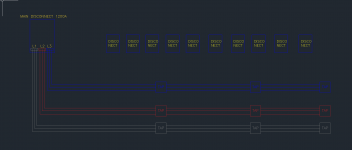Not necessarily, the recertification is to ensure that the installation is safe and that nothing improper has been done, not to bring the installation up to current codes. However, this violation of the tap conductor rule is not something that was legal 40 years ago and now isn't; It simply affects the safety of the installation since a 350mcm conductor is not protected (at least from overload) if it is connected to a 1200 MCB and, in turn, to another tap where three different cables go to three different OCPDs (200A, 125A, 125A). If these three breakers at some moment carry at least 80% of their load, it exceeds the ampacity of the conductor (350MCM), causing heating without any breaker protecting it.


